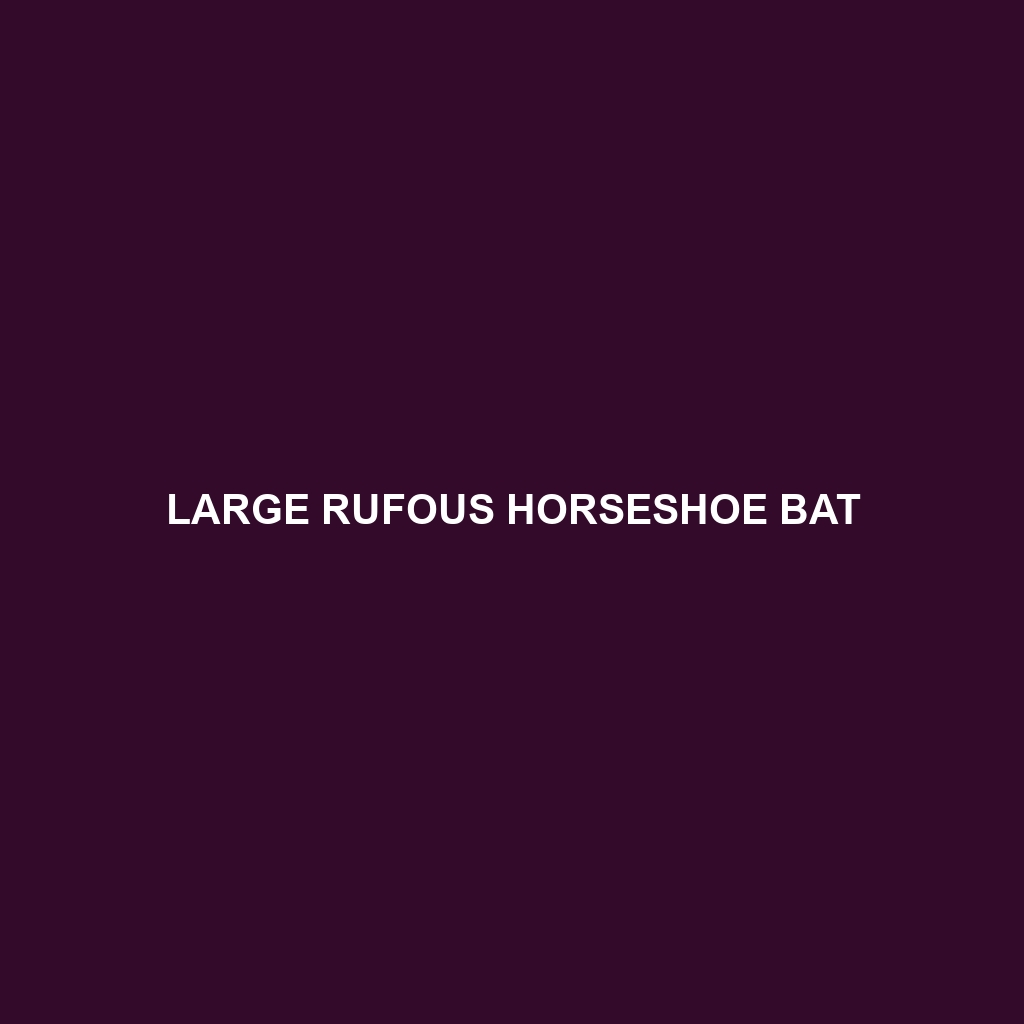Indian Rufous Horseshoe Bat
Common Name: Indian Rufous Horseshoe Bat
Scientific Name:
Habitat
The Indian Rufous Horseshoe Bat is primarily found in the tropical and subtropical regions of South Asia. Its range includes countries such as India, Sri Lanka, and Bangladesh, where it prefers to inhabit humid forests, caves, and sometimes urban areas. These bats favor roosting in caves and tree hollows that provide them with ample protection and suitable microclimates.
Physical Characteristics
This species is known for its distinctive horseshoe-shaped nose leaf, which aids in echolocation. The Indian Rufous Horseshoe Bat typically measures between 6 to 8 cm in length and has a wingspan of approximately 25 to 30 cm. Its fur is soft and can vary in color from light brown to a reddish-brown, providing it with effective camouflage among its forest habitat. Its large ears and eyes make it well-adapted for nocturnal activities.
Behavior
Indian Rufous Horseshoe Bats are primarily nocturnal, emerging at dusk to forage for food. They display fascinating social behaviors, often roosting in groups that can number in the hundreds. Their echolocation calls are sophisticated, allowing them to navigate through dense foliage and find insects while in flight. These bats are also known to be agile fliers, which enhances their hunting efficiency.
Diet
Feeding mainly on small insects, the Indian Rufous Horseshoe Bat plays a crucial role in controlling pest populations. Their diet primarily consists of moths, beetles, and other flying insects. They utilize echolocation to detect prey during flight, showcasing their adaptability in hunting strategies. These bats are effective nocturnal predators, contributing significantly to the ecosystem’s balance.
Reproduction
The reproductive habits of the Indian Rufous Horseshoe Bat include a breeding season that typically occurs during the warmer months. Females give birth to a single pup after a gestation period of approximately 2 to 3 months. Offspring are often born in roosting colonies, where mothers tend to their young, providing them with both nourishment and protection during their early weeks of life.
Conservation Status
As of the latest assessments, the Indian Rufous Horseshoe Bat is classified as ‘Vulnerable’ due to habitat loss and degradation. Conservation efforts are necessary to protect their natural habitats from urban development, deforestation, and agricultural expansion. Awareness campaigns emphasizing their ecological role can help secure the future of this remarkable species.
Interesting Facts
One of the most fascinating aspects of the Indian Rufous Horseshoe Bat is its social structure. They often exhibit communal roosting behavior, which leads to a complex interaction among individuals. Moreover, these bats are known to travel long distances in search of food, sometimes covering several kilometers each night.
Role in Ecosystem
The Indian Rufous Horseshoe Bat plays a vital role in its ecosystem by acting as an important pollinator and pest controller. By feeding on insects, they help maintain agricultural balance, while their potential role in pollinating certain plant species contributes to biodiversity. Their presence in the ecosystem is indicative of a healthy environment, making them essential to the ecological fabric.
